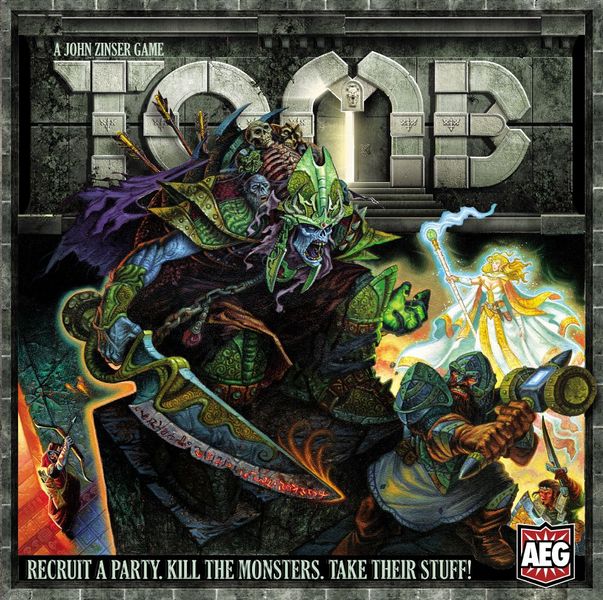Tomb (2008) Board Game
Tomb is a board game released in 2008, designed by Nate Barnes, Jason Engle, Carl Frank, and Jonathan Hunt. It is a game that falls under the Adventure, Exploration, Fantasy, Fighting, and Medieval categories, making it suitable for players aged 12 and above. The game features dice rolling, a modular board, and secret unit deployment as its main gameplay mechanisms.
Game Components of Tomb
How To Setup Tomb
To set up Tomb, players first choose a tomb map; the game offers two maps, with the second being more complex and recommended for experienced players. The Tomb deck is shuffled, and each player is dealt three cards (traps, monsters, and treasure). Players take turns secretly placing these cards into the crypts until all are filled. Each crypt can hold a varying number of cards, and remembering the placement is crucial. The heroes are drawn from a bag and set up at the Inn, where players can recruit them to form their party.
Gameplay Mechanics and Game Objective
Player Experience
Playing Tomb is an intense and dynamic experience, with a focus on strategy and luck. Players must balance recruiting a diverse party with the urgency of being the first to explore the crypts. The game is known for its high mortality rate among party members, making each character somewhat disposable but also adding to the excitement and unpredictability. Interactions between players are indirect but can be significant, especially through strategy cards and pickpocketing attempts.
Pros
Cons
Personal Thoughts on Tomb
Tomb is ideal for players who enjoy dungeon crawl games, strategic party building, and a dash of luck. It’s perfect for those who relish the challenge of navigating dangerous crypts and the satisfaction of overcoming formidable obstacles. However, players who prefer to build long-term relationships with their characters or seek a more straightforward, less complex game might find Tomb less appealing. Overall, Tomb offers a rich and engaging gameplay experience that rewards strategy and adaptability.
We are supported by our audience. When you purchase through links on our site, we may earn an affiliate commission, at no extra cost for you. Learn more.

